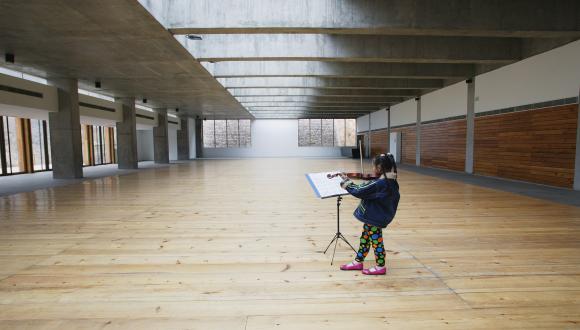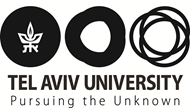The Karin Brandauer Extrordinary Chair for Guest Lecturers
The chair is devoted to the inviting of creative artists in the areas of directing, acting, acting in front of a camera, scriptwriting and stage design in the framework of workshops and projects, and guest researchers in the areas of theatre, film and television.
Prince Wittgenstein Chair for International Exchange in Music
The Prince Wittgenstein Chair for International Exchange in Music provides a framework for visits and various types of collaboration between TAU academics and their counterparts at leading institutions abroad.
Activities of the Chair will include the following:
• Exchanges of prominent Israeli and foreign musicians who will perform, lecture, hold master classes and provide specialized instruction;
• International colloquia, meetings, workshops, and conferences in the field of music which promote links between Israel and foreign countries;
• Collaborative research involving scientists at the Buchmann-Mehta School of Music and at institutions abroad.
The George and Mary Bloch Chair
Incumbent of the Chair: Prof. Nurit Kennan-Kedar, Dept. of Art History
The George and Mary Bloch Chair in Comparative Art History focuses on the history of European Art and comparative research of the artistic creation of western civilization. The main subjects of research are:
1. Comparative research between official and popular art: Official art was created according to taste, intentions and attitudes of ruling institutions. These official norms became the canon of study in art history. The traditional research of art history dedicated most of its efforts to study "canonical art" that was considered to be of highest order. Alongside of the official art, there existed popular religious or civic art, which reflects the ways of life and concepts of various classes. The various aspects of popular art such as civic sepulchral and devotional art will be also considered.
2. The language of pictorial arts: The study of pictorial arts as an autonomous language, parallel to that of the written and spoken languages is relevant to the visual culture. Research will contribute to the understanding of the language of art and to the methods it is "read" through signs, symbols, context and connections to other languages. One of the first areas of study will be that of the language of gestures in pictorial images.
3. Historiography: This area of research will center on projects comparing the concepts of writing art history as an expression of ideologies and mentality of various periods. The study of feminism and art history, we hope will contribute to the understanding of female artistic activity as meaningful in art history.
4. The artistic creation in cultural centers and its relation to cultural periphery: Discussion will center on artistic creation in peripheral regions and their relation to prominent centers. Specific issues such as: contacts between various areas in the periphery as the Near East or Eastern Europe to the various centers in Western Europe; or artistic conditions in frontier areas such as Spain and Sicily in the Middle Ages, and their relations to artistic norms: Process of transformation and translation of forms between various areas
5. Minority groups living under a foreign rule and their art: Armenians and Copts in the Middle East, Moslems under Christian rule in Spain, Christians and Jews under Moslem rule, are prominent examples. There are no translations available
The Hannelore Kipp Chair in the Study of Arts
The Hannelore Kipp Chair in the Study of Arts inaugurated in May 1997. Since 2022, Professor Assaf Pinkus of the History of Art Department of Tel Aviv University is its incumbent.
The Chair is devoted to research into the mainstreams and trends in art history and to the understanding of cultural development, intellectual thinking and the symbolic language of nations and cultures. Among other issues, the Chair will deal with developments in art history in Israel with emphasis on the interdisciplinary nature. The place of art history as a scientific and didactic discipline should not only be confined to the portals of the academic world, but also be freely available to all those who seek knowledge. For this reason, it is worth encouraging and supporting this important discipline among the public.
The activities, within the framework of the Chair, will encompass art history research in the countries of the Mediterranean basin, as well as among the European countries to its north. of the Mediterranean. They will focus on comparative research among the various branches and trends of art in different periods, with emphasis on the Classical heritage. In this context, studies will also touch upon art research in other parts of the world, such as pre-Columbian or Far Eastern art. Central subjects to be dealt with will include religious and non religious architecture, free sculpture and reliefs, painting and mosaics, and complimentary subjects such as literary origins, philosophy, religion and cult; all of which can throw light on works of art and their significance.
In addition to the support of on-going research, the resources of the Chair will also be directed toward assisting other academic activities, such as seminars, national and international conferences and the invitation of scholars; as well as to periodical lectures, publications and grants to out standing students.
The UNESCO Chair on Modern Heritage
cms.education.gov.il/EducationCMS/UNITS/Unesco
Incumbent of the Chair: Prof. Moshe Margalit, School of Architecture.
The purpose of the Chair shall be to promote an integrated system of research, training, information and documentation in the field of heritage of the Modern Movement. It will serve as a means of facilitating collaboration between high-level, internationally recognized researchers and teaching staff of the University and other institutions in Israel and elsewhere in Europe and the North American region, and in other regions of the world.
The David J. Azrieli Chair in Urban

The chair focuses on research of urban architecture in Israel and multi-disciplinary projects which include sociologists, geographers and city planners.
The Emanuel Herzikowitz Chair for 19th and 20th Century Art
Incumbent: Professor Freddie Rokem, Department of Theatre Studies.
‘The Emanuel Herzikowitz Chair for 19th and 20th Century Art’ studies the inter-relations between the arts as well as the specific, individual characteristics of each of the individual artistic forms of expression, beginning from the early avant-garde movements, through early and high modernism and ending with post-modernism and the reactions it has triggered. This is a period of unique technological innovations and new expressive possibilities which have radically altered the social and cultural conditions of the arts. These changes have also lead to an unprecedented variety and scope in all the fields of artistic expression. At the same time however these technological developments have also led to extremely destructive historical developments.
‘The Herzikowitz Chair of 19th and 20th Century Art’ investigates the complex dialectical interaction between these new possibilities and the failures of history, which at the same time as this interaction has created the conditions for the arts during this period is also been one of its central topics.
These unique conditions have served as the basis for the developments of both artistic and critical discourses as well as the complex relations between them. During the last two centuries of the second millennium the artistic and critical discourses even became unified, or at least very closely related, and special attention will be given to this interaction, in the inter-medial forms of art as well as through multi- and inter-disciplinary methodologies of research.
The arts of the 19th and 20th centuries have developed in constant interaction and symbiosis, as well as in a direct, simultaneous response to the contemporary historical developments, the technological innovations and the critical, philosophical discourses. In particular the development of new visual media like photography, film and ‘new media’ are an expression of this interaction, which have in turn influenced most of the other forms of artistic expression. These issues have even received intensified attention during the first years of the new millennium.
The Chair will organize workshops and conferences for young scholars and advanced graduate students in collaboration with senior scholars in the field as well as initiate innovative research and publications in these cross-over fields.
Tel-Aviv Institute for Study & Research for Architecture
Prof. Moshe Margalit, Head of the Institute (In stages of establishment)
To enhance planning and architecture and to promote public awareness on the built environment, the institute will conduct multidisciplinary, independent research, focusing on the significance of the unique cultural heritage of Israel and Tel Aviv in particular.
The Institute will collaborate with the UNESCO Chair on modern heritage at TAU and academic Institutions and organizations around the world. This conduct of a wide continuous dialogue and an open debate will influence, shape and enhance architectural and planning processes, in today's societies locally and abroad.
The Carlo and Karin Giersch Chair for Research in Modern Painting

Research in Modern Art within the domain of this Chair has two basic mandates: archival and hermeneutic. The first deals with tracing paintings back to their original context of production, while re-fining and re-defining the notion of "context" to meet contemporary scholarship.
Beyond the circumstances of patronage and commission, perception and notation, the context must be considered more globally, consisting of the complex interaction of all the practices, institutions and structures that make up the sphere of culture.
The second mandate refers to the interpretation and the "reading" of images, and it focuses on developing and empowering sophisticated "reading" skills and practical criticism. These are regarded as basic components of art history profession and discipline.
A third related branch of research within the domain of this Chair is devoted to Israeli art history, beginning with the founding of "Bezalel", the first art academy in Jerusalem (1906), and leading to the contemporary and recent artists and trends in Israeli Art. Research in this field includes the study of the different artistic traditions brought over by waves of immigrants and the long and complex dialogue between Israeli art and European and American art.







